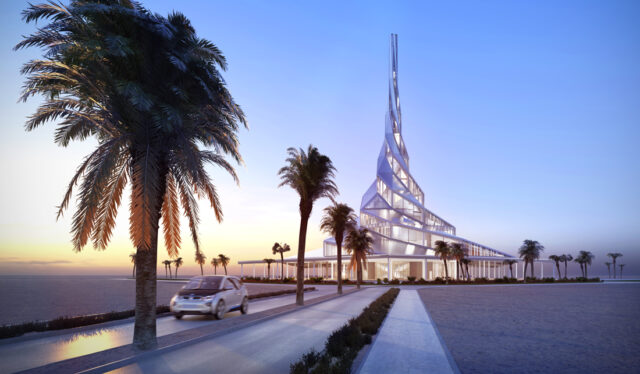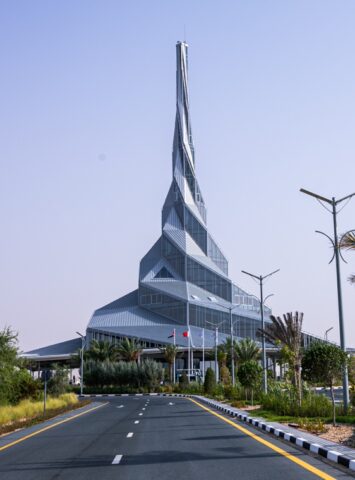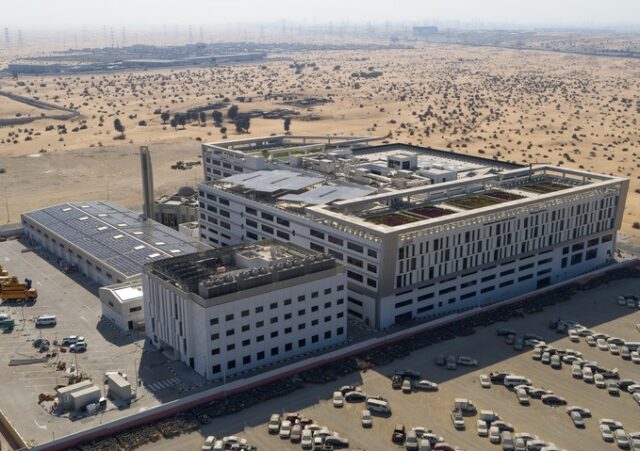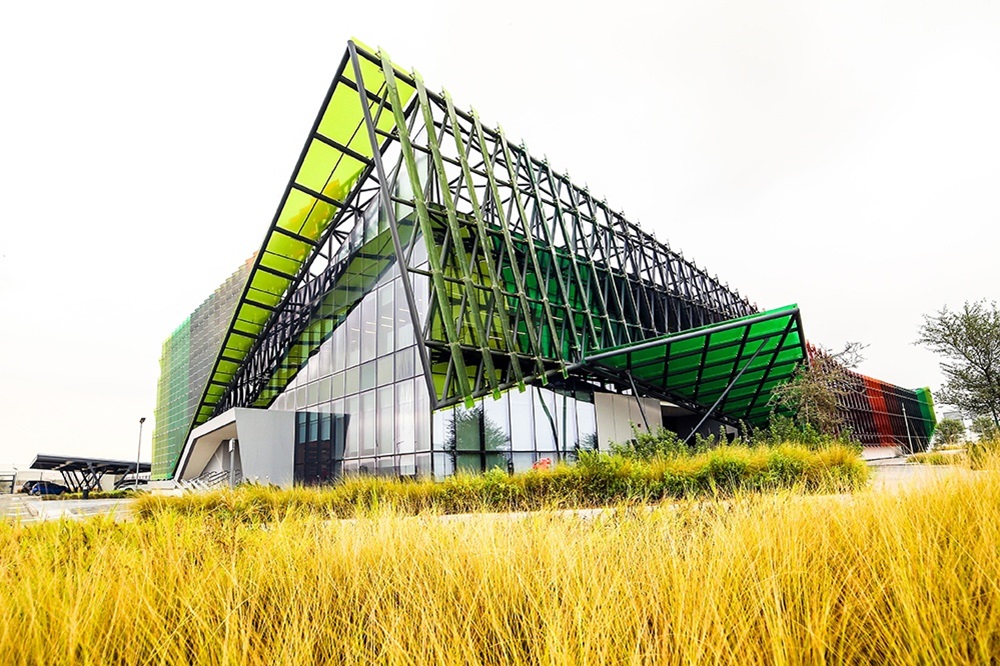LEED Certification, which stands for Leadership in Energy and Environmental Design, is a green building certification system that is recognized all over the world. It was established to promote sustainable building practices in construction projects. Top three projects with the LEED Certification in UAE for their use of environmentally responsible planning and design. Find out what makes these initiatives stand out from others and how your company might profit from participating in them.
DEWA Research and Development Center
The DEWA Research and Development Center, which was finished in 2016, is totally powered by renewable energy sources such as solar, wind, and geothermal energy. The structure has lighting that is very efficient, water conservation technologies of the most recent generation, natural ventilation, and white reflecting roofs to reflect the heat that is produced by the sun. Because of its innovative approach to sustainability and its use of alternative forms of energy, it was given the LEED certification in UAE with the highest grade possible, Platinum.

The R&D Center is increasing competitiveness on the most recent renewable and innovative technologies while simultaneously raising awareness about the importance of sustainability.
A Research and Development Laboratory, also known as a practical laboratory area for testing facilities, is one of the primary components of the development project. The research and development center’s goals are to stimulate sustainable energy supply, the use of a variety of energy sources, and the development of an economic climate that fosters innovation. By raising efficiency requirements and providing financial backing for renewable energy programs, it helps to construct an economy based on knowledge. The Centre will provide a contribution to the enhancement of research and development (R&D) in the areas of renewable energy, clean technology, and activities relating to sustainability.
The structure was successful in earning the LEED Platinum, which is the highest level of certification available. 13% of the energy is supplied by on-site renewable energy sources such as solar photovoltaic panels and building integrated photovoltaic cells, also known as BIPV. This results in an overall savings of 25% of the building’s total energy consumption.
The structure is made up of 49% locally sourced materials (based on cost), 31% recycled content, and 100% wood that has been certified as having met the standards of the Forest Stewardship Council (FSC). There has been a reduction of about 52% of the potable water that is used for flush fixtures, as well as a reduction of approximately 51% of the water use inside due to the introduction of more water-efficient fixtures.

Solar Innovation Centre
Another great example of a cutting-edge project earned the LEED certification in UAE is the Solar Innovation Centre, which may be found at Masdar City in Abu Dhabi. This project makes use of photovoltaic systems that have a high efficiency and has placed one hundred solar panels in order to provide electricity to the center. Additionally, it has air conditioning systems that limit the amount of energy used and technology that uses minimal standby power.
In addition, it has a sophisticated water management system that incorporates rainwater collecting and other activities that promote water reuse, both of which guarantee considerable cost savings. Because of its exceptionally effective use of renewable energy sources and environmentally responsible componentry in its design, this cutting-edge system was given the LEED Platinum certification.
As a component of the Mohammed Bin Rashid Al Maktoum Solar Park, the Solar Innovation Centre was designed to demonstrate the most cutting-edge renewable and clean energy technology in an effort to pique the interest of people, tourists, college students, schools, and enterprises. This building will also function as a permanent conference center, which will host events, conferences, business meetings, training courses, and seminars devoted to the discussion of green and sustainable projects.

The structure has four stories, each of which is around 4,000 square meters in size, and it stands approximately 90 meters tall. The Solar Innovation Centre has been awarded the LEED Platinum certification after receiving a score of 101 out of a possible 110 points during the first three months of the year 2020. The structure was able to get this recognition by receiving high green ratings in the categories of water efficiency, interior environmental quality, energy efficiency, innovation, and design. The structure collects rainfall and purifies greywater right there on the property. 100% Energy Savings (based on ASHRAE 90.1 -2007 Baseline Energy Code).
The on-site renewable energy production systems include a BIPV System, which generates an annual energy output of 441,139 kWh, a 13 MW PV Solar Plant, which generates an annual energy output of 944,281 kWh, and a Solar Hot Water System, which generates an annual energy output of 35,059 kWh. 54% decrease in overall water consumption across all fixtures and 50.9% reduction in water use across all flush fixtures.
Local extraction, harvesting, or recovery of goods and construction materials, in addition to regional manufacturing, accounts for 24.24 percent of the total (within a 500-mile radius of the project site). Parking spots closer to the entrance are reserved for fuel-efficient and low-emission cars within the building. Runoff from storms is treated to the extent of 97%. The area of the roof with high albedo is equal to 210% of the total roof area.

Distribution Power Division Complex
The Distribution Power Division Complex, which can be found in Al Habab, is a project that has been awarded the LEED Certification in UAE. This cutting-edge structure has reduced its reliance on cooling systems with the use of energy-saving features such as LED lighting and occupancy sensors, natural daylight harvesting systems, and designs for increased thermal comfort.
The building methods that were used make use of eighty percent recycled materials, and the paints that were used had a low volatile organic compound (VOC) content. This helps to limit the release of pollutants and minimizes the negative impacts on the inhabitants’ health. Because of this complex’s realistic approach, the US Green Building Council has determined that the complex is qualified for the LEED Gold certification.
The Distribution Power Division is in charge of ensuring that the process of connecting new customers to the power grid runs smoothly throughout Dubai. It carries out DEWA projects and manages its assets in accordance with the most effective procedures from across the globe. Distribution Power is in charge of the operation and maintenance of DEWA’s distribution network, which consists of substations as well as subterranean cables and overhead wires. The primary responsibility of Distribution Power is to supply high-quality electricity receiving services, to enhance the distribution grid with reliable, efficient, and safe operations through the execution of high-voltage and low-voltage (HV and LV) projects, and to operate and maintain the distribution network.
The LEED V4 BD+C: NC Platinum Level Certification has been awarded to the Distribution Power Division building. It is a commercial office building that can be found in the Al-Ruwayyah neighborhood. It is a building that is sustainable, clean, and powered by renewable energy. There is a direct relationship between the Internal Air Quality (IAQ) and employee performance.
The materials that are utilized throughout the whole building are environmentally friendly items, which helps enhance the Internal Air Quality (IAQ). Solar photovoltaic panels have been erected on the building’s top level, which has a green roof. The building has a 34% lower overall energy usage and a 52% lower overall water consumption than its predecessor. The Distribution Power Division building is made more sustainable through the use of sustainable and renewable energy sources. [Case in point:] [Case in point:]



